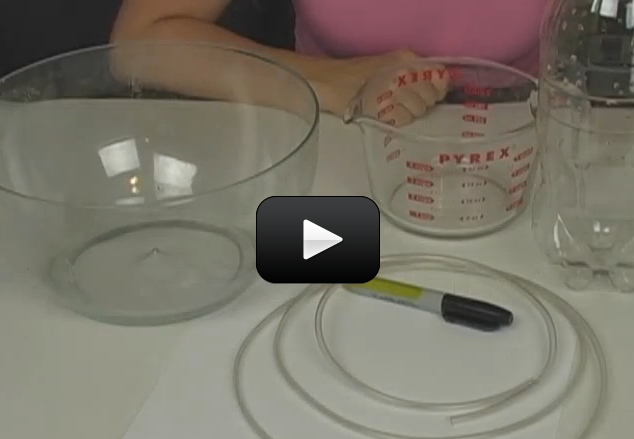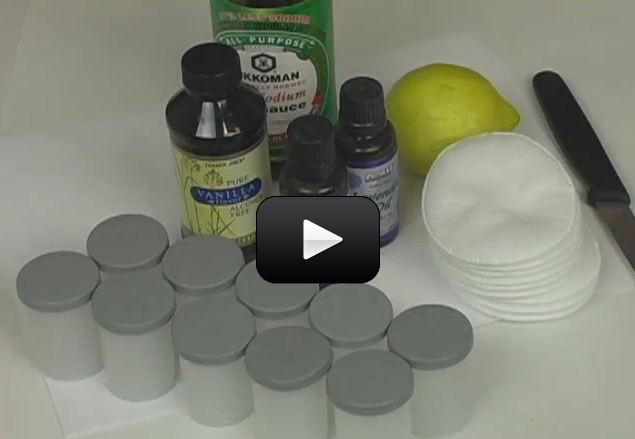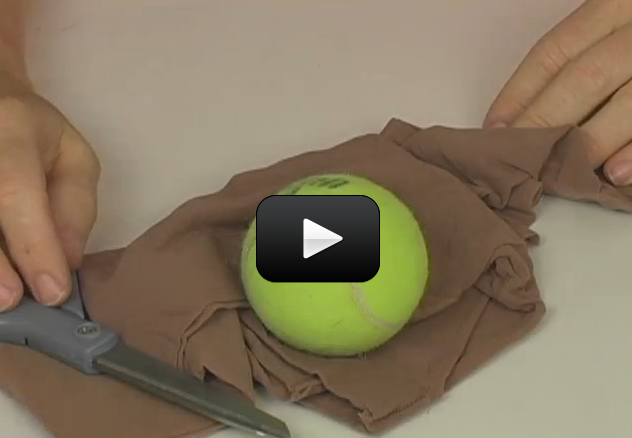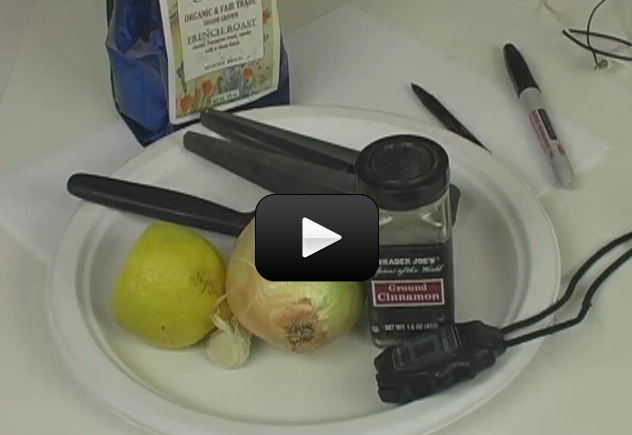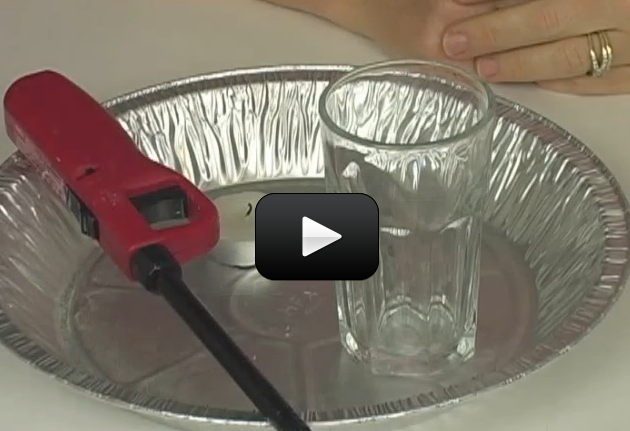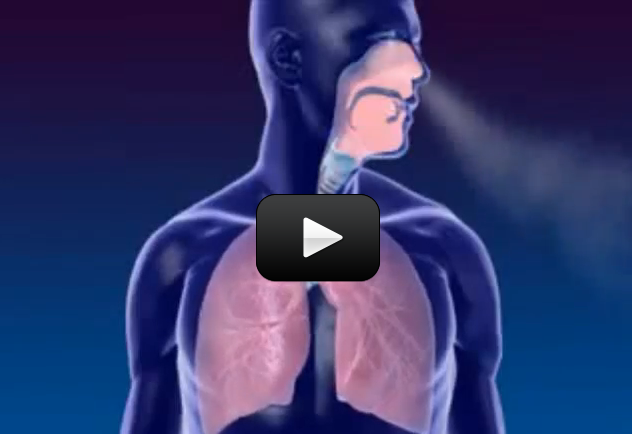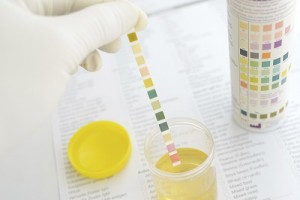 Although urine is sterile, it has hundreds of different kinds of wastes from the body. All sorts of things affect what is in your urine, including last night’s dinner, how much water you drink, what you do for exercise, and how well your kidneys work in the first place. This experiment will show you how the kidneys work to keep your body in top shape.
Although urine is sterile, it has hundreds of different kinds of wastes from the body. All sorts of things affect what is in your urine, including last night’s dinner, how much water you drink, what you do for exercise, and how well your kidneys work in the first place. This experiment will show you how the kidneys work to keep your body in top shape.
[am4show have=’p8;p9;p29;p56;p81;p87;’ guest_error=’Guest error message’ user_error=’User error message’ ]
Materials
- 1 liter of water per student
- 1 can of soda per student
- 1 sports drink, like Gatorade, per student
- Red food dye
- Chalk (or a handful of sand)
- Coffee filter or cheesecloth
- pH paper strips
- Disposable cups
- Clean glass jar
- Rubber band
- Measuring cups
If you are doing the optional Third Bonus Experiment:
- solution your teacher has prepared for you
- pipe cleaners
- cleaned out jar or bottle (pickle, jam, or mayo jar)
- water
- borax
Download Student Worksheet & Exercises
Experiment
First Experiment: How Quickly Do the Kidneys Process Fluids?
- Drink a liter of water quickly (in less than five minutes).
- Wait 20 minutes (you can start on the second part of this lab while you wait) and then collect your urine in a disposable cup in the bathroom and use a pH testing strip to test the pH by dipping it in the cup.
- Repeat four times so that you have four samples collected 20 minutes apart.
- Repeat steps 1-3 for two different liquids, such as a sports drink and a soda.
- Complete the data table for all three liquids.
Second Experiment: Kidney Filtration
- Crush a piece of chalk and place it in a clean glass jar. (You can alternatively use a handful of sand from the playground if you don’t have chalk.)
- Fill the jar partway with water.
- Add a few drops of red food coloring to the water.
- The chalk (or sand) represents toxins in the blood. The water represents the blood.
- Place a coffee filter (or cheesecloth) on top of the jar and secure with a rubber band. This coffee filter is your kidney.
- Tip the jar over a disposable cup and pour the contents into the disposable cup. This is the kidney filtering the blood.
- Observe what the filter traps and what it doesn’t and record your observations in the data table.
BONUS Third Experiment: Kidney Stones
- A kidney stone is something that develops in the urinary tract from a crystal. Crystals start from “seed crystals” that grow when placed in the right solution.
- Use a pipe cleaner to create a shape for crystals to cling to (suggestion: cut into 3 lengths and wrap around one another). Curl the top pipe cleaner around a pencil, making sure the shape will hang nicely in the container without touching the sides.
- Add 2 cups of water and 2 cups of borax (sodium tetraborate) into a pot. Heat, stirring continuously for about 5-10 minutes. Do not boil, but only heat until steam rises from the pan.
- When the borax has dissolved, add more, and continue to do so until there are bits of borax settling on the bottom of the pan that cannot be stirred in (It may be necessary to stop heating and let the solution settle if it gets too cloudy). You’ll be adding in a lot of borax! You have now made a supersaturated solution. Make sure your solution is saturated, or your crystals will not grow.
- Wait until your solution has cooled to about 130oF (hot to the touch, but not so hot that you yank your hand away). Pour this solution (just the liquid, not the solid bits) into the jar, and add the pipe cleaner shape. Make sure the pipe cleaner is submerged in the solution. Put the jar in a place where the crystals can grow undisturbed overnight, or even for a few days. Warmer locations (such as upstairs or on top shelves) are best.
- NOTE: These crystals are NOT edible! Please keep them away from small children and pets!
Kidneys Process Fluids Data Table
Record the pH and volume (did you urinate a lot, medium, or little?)
|
Drink Type |
20 min |
40 min |
60 min |
80 min
|
Urine tests look at different components of urine. Most urine tests are done to get information about the body’s health and clarify problems that it might be having. There are over 100 different kinds of urine tests that can be done. Depending on the test, scientists look for different things.
The most obvious, and the one you can do yourself at home, is to look at the color of urine, which is normally clear. Many different things affect urine color, and the darker it is, the less water there is in it. Vitamin B supplements can turn it bright yellow. If you like to eat blackberries, beets or rhubarb, then your urine might be red-brown.
The next thing to check is smell. Since urine doesn’t smell much, it’s a signal if it suddenly takes on an unusual odor. For example, if you have an E. coli infection, your urine will take on a bad odor.
Scientists also check the specific gravity, which is a measure of the amount of substances in the urine. The higher the specific gravity number measures, the more substance is in the urine. For example, when you drink a lot of water, your kidneys add that water into the urine, which makes for a lower the specific gravity number. This test shows how well the kidneys balance the amount of water in urine. The specific gravity for normal urine is between 1.005-1.030.
pH is a measure of how basic or acidic something is, and for a urine test, it’s the pH of the urine itself. A pH of 7 is neutral, a 9 is strongly basic, and a 4 is strongly acidic. Using a strip of pH paper will tell you how basic or acidic your urine is. Normally, pH is between 4.6-8.0 for urine.
Protein is not supposed to be in the urine, unless you’re sick with a fever, just had a hard workout session, or are pregnant. Scientists look for protein to be present in the urine to detect certain kinds of kidney diseases.
Glucose is sugar in the blood, and usually there’s no glucose in urine, or if there is, it’s only a tiny bit. When scientists detect glucose in the urine, it means that the body’s blood sugar levels are very high, and they know they need to look into things further.
When scientists find nitrites, they know that bacteria are present, especially the kind that cause a urinary tract infection because bacteria make an enzyme that changes nitrates to nitrites in the urine.
Strong, healthy people will have a couple of small crystals in their urine. If scientists find a large number of crystals, then they start looking for kidney stones. If they don’t find kidney stones, then they start looking at how the body metabolizes food to see if there’s a problem.
Most adults make about 1-2 quarts of urine each day, and kids make about 0.6-1.6 quarts per day
Kidneys Filtration Data Table
|
Amount of Chalk or Sand |
Amount of Water |
Color of Water after Mixed |
Amount of Solids Filtered |
Questions:
- Which fluid produced more urine for the first experiment?
- Did the caffeine solutions cause the calcite stones to shrink or have no effect?
- What does pouring the chalky water through a coffee filter show?
- What are kidney stones and how are they formed?
[/am4show]


